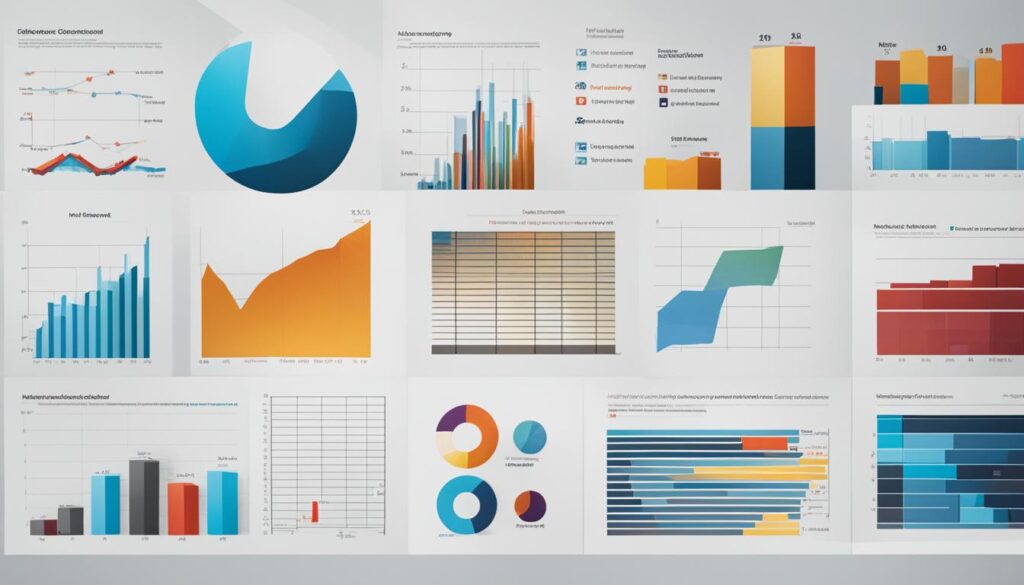Productive behavior is essential for achieving organizational goals and maximizing productivity. Understanding the concept and its impact on employee performance is crucial for personal and professional growth. In this article, we will explore the definition and measurement of productive behavior, the role of behavioral patterns in productivity, and provide examples of productive behaviors that can enhance efficiency. Let’s dive in!
Defining and Measuring Productive Behavior
Productive behavior is a crucial aspect of achieving organizational goals and improving overall performance. But how do we define and measure productive behavior effectively? This section will explore the importance of performance metrics and standards in evaluating and quantifying productive behavior.
Performance metrics provide a framework for assessing job performance and determining the impact of employee behavior on organizational success. Metrics such as quality of work, output, and other performance standards enable organizations to set clear expectations and benchmarks for productivity. By establishing these metrics, companies can measure progress, identify areas for improvement, and recognize high-performing individuals.
By utilizing performance standards, organizations can differentiate between productive and counterproductive behaviors. These standards serve as a guide to evaluate employee actions and behaviors objectively. With objective measures in place, organizations can gain valuable insights into the effectiveness of their employees’ performance and make informed decisions to enhance individual and organizational productivity.

The Importance of Performance Metrics in Evaluating Job Performance
Performance metrics play a vital role in evaluating job performance and tracking progress towards organizational goals. They provide a clear and measurable way to assess an employee’s contribution to the overall success of the company. By setting specific metrics and performance standards, employers can motivate their workforce, align individual goals with organizational objectives, and drive productivity.
Organizational performance heavily relies on the collective efforts and behaviors of its employees. Therefore, accurately defining and measuring productive behavior is crucial for optimizing performance at both the individual and organizational level. By implementing performance metrics and standards, organizations can foster a culture of productivity, identify areas of improvement, and empower their workforce to achieve greatness.
Behavioral Patterns and Productivity
Behavioral patterns have a significant impact on productivity in the workplace. These patterns are the recurrent ways in which individuals act in specific situations. They are shaped by habits, strengths, weaknesses, and past experiences. By recognizing and modifying these behavioral patterns, individuals can enhance their productivity and improve their overall performance.
Habits play a crucial role in shaping our behavioral patterns. Positive habits, such as starting the day with a clear plan and prioritizing tasks, can significantly boost productivity. On the other hand, negative habits, such as procrastination or constant multitasking, can hinder our ability to stay focused and perform at our best.
Identifying our strengths and weaknesses is another essential aspect of understanding and improving our behavioral patterns. Knowing our strengths allows us to leverage them in our work, while acknowledging our weaknesses enables us to develop strategies to overcome them. For example, if time management is a weakness, implementing techniques like the Pomodoro Technique or time-blocking can help improve productivity.
Developing productive habits
To develop productive habits, it is important to create a routine that supports efficient and effective work. This can include setting specific goals, breaking tasks into manageable steps, and establishing a conducive work environment. Additionally, practicing self-discipline and maintaining a positive mindset can help overcome obstacles and distractions that may arise.
In conclusion, behavioral patterns play a vital role in productivity. By recognizing and modifying these patterns, individuals can enhance their productivity by developing positive habits, leveraging strengths, and addressing weaknesses. By actively working to improve behavioral patterns, individuals can unlock their full potential and achieve higher levels of productivity in their personal and professional lives.

Examples of Productive Behaviors
When it comes to being productive, there are several behaviors that individuals can adopt to enhance their performance in the workplace. By implementing these behaviors, employees can improve focus, efficiency, and overall job satisfaction. Let’s explore some examples of productive behaviors that can make a significant difference in productivity.
Minimize Distractions
One of the key factors in maintaining productivity is to minimize distractions. This includes creating a work environment that is free from interruptions, such as turning off notifications on electronic devices and finding a quiet space to focus. By eliminating distractions, individuals can concentrate on the task at hand and complete it more efficiently.
Set Priorities
Another crucial aspect of productive behavior is setting priorities. By identifying the most important tasks and organizing them based on urgency and importance, individuals can effectively manage their time and make the most out of their workday. This approach helps individuals stay focused on what truly matters, ensuring that important deadlines are met and important goals are achieved.
Practice Monotasking
In today’s fast-paced world, multitasking has become the norm. However, studies have shown that multitasking actually hinders productivity. One productive behavior to adopt is monotasking, which means focusing on one task at a time. By dedicating their full attention to a particular task, individuals can work more efficiently and produce higher quality results.
Manage Time Well
Effective time management is a key ingredient in productive behavior. This involves planning and organizing tasks, setting realistic deadlines, and allocating time for breaks and relaxation. By managing their time well, individuals can avoid procrastination, work more efficiently, and achieve better work-life balance.
Embrace Creativity and Innovation
Being open to creativity and innovation is another productive behavior that can lead to breakthroughs and improved performance. By thinking outside the box, exploring new approaches, and being willing to take calculated risks, individuals can find innovative solutions to challenges and bring fresh ideas to the table.
Collaborate with Teammates
Effective collaboration is vital to productivity in the workplace. By fostering a collaborative environment, individuals can tap into the collective knowledge and skills of their teammates, leading to enhanced problem-solving, increased efficiency, and improved outcomes. This includes active communication, sharing ideas, and working together towards common goals.

By adopting these productive behaviors, individuals can significantly enhance their performance and contribute to the overall success of their organization. Minimizing distractions, setting priorities, practicing monotasking, managing time well, embracing creativity and innovation, and collaborating with teammates are just a few examples of behaviors that can make a positive impact on productivity and job satisfaction.
The Role of Objective Measures in Performance Evaluation
Objective measures play a crucial role in performance evaluation processes. They provide a standardized and quantifiable framework for assessing job performance based on specific metrics, such as skill testing and adherence to policies. By using objective measures, organizations can ensure a fair and consistent evaluation process.
One of the advantages of objective measures is their simplicity and ease of implementation. These measures provide clear guidelines for evaluating employee performance, making it easier for both managers and employees to understand the criteria used and the expectations set. Objective measures also help in reducing bias and subjectivity in performance evaluations, fostering a more transparent and equitable work environment.
However, objective measures have their limitations and disadvantages as well. They often focus on quantifiable aspects of job performance, such as completion of tasks or meeting specific targets, while overlooking other important factors, including employee satisfaction, collaboration skills, and the overall value an employee brings to the organization. This narrow focus may lead to a one-dimensional evaluation that fails to capture the holistic nature of an employee’s contributions.
The Importance of Balanced Evaluation
To create a more comprehensive performance evaluation system, it is essential to use objective measures in conjunction with subjective measures that consider various aspects of job performance. Subjective measures, such as self-assessments, peer reviews, and manager feedback, help provide a more balanced and holistic view of an employee’s performance. They capture intangible qualities like teamwork, communication, creativity, and problem-solving skills that contribute to overall success.
By combining objective and subjective measures, organizations can ensure a more accurate and fair evaluation of employee performance. This balanced approach allows for a more nuanced understanding of an employee’s strengths, weaknesses, and potential areas for improvement, enabling targeted development efforts and fostering a culture of continuous growth and improvement.

In summary, objective measures play a vital role in performance evaluation processes, offering simplicity and consistency. However, their exclusive use may overlook important qualitative aspects of job performance. By incorporating subjective measures into the evaluation process, organizations can create a more comprehensive and balanced approach that accounts for both tangible and intangible contributions, resulting in a fair and inclusive evaluation of employee performance.
Conclusion
Productivity is key to achieving success in both our personal and professional lives. It is influenced by various factors, including motivation, natural talent, training, and time management. By understanding and practicing productive behaviors, we can significantly improve our job performance and overall productivity.
Defining and measuring productive behavior is crucial for organizations. It allows them to assess the impact of these behaviors on job performance and work towards achieving organizational goals. By prioritizing productive behavior and minimizing distractions, we can enhance efficiency and success.
Effective time management is another essential aspect of productivity. By managing our time well, setting priorities, and avoiding multitasking, we can maximize our focus and productivity. Additionally, collaboration plays a vital role in fostering innovation and problem-solving, leading to greater overall efficiency in the workplace.
In conclusion, productivity is not only about talent or motivation alone; it is a combination of various factors. By practicing productive behavior, managing our time effectively, and fostering collaboration, we can unlock our full potential and achieve greater success in all areas of life.








